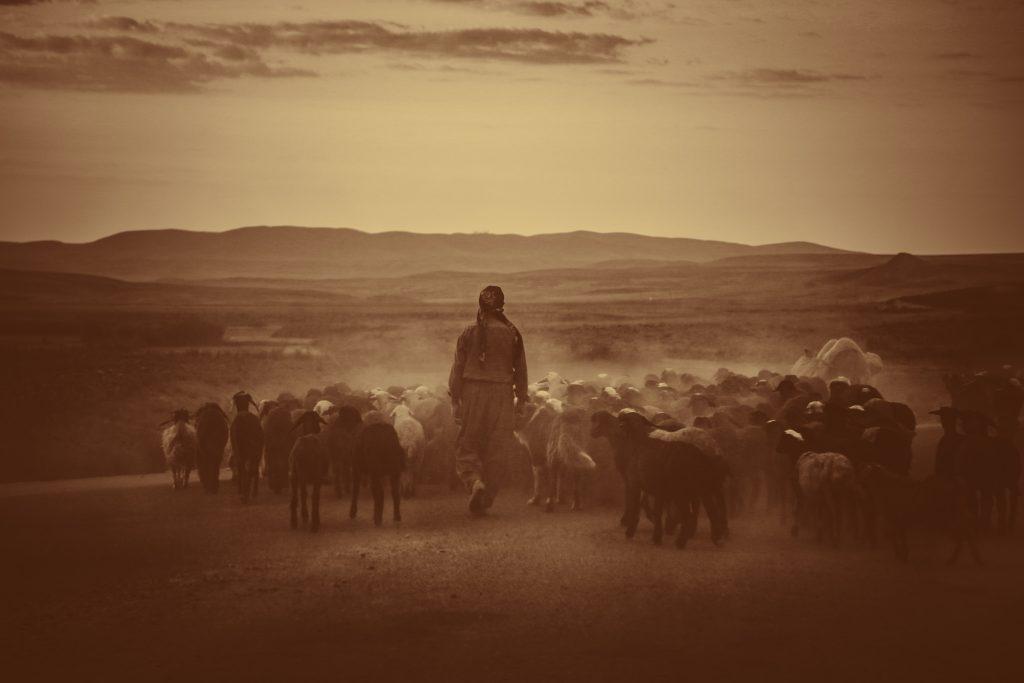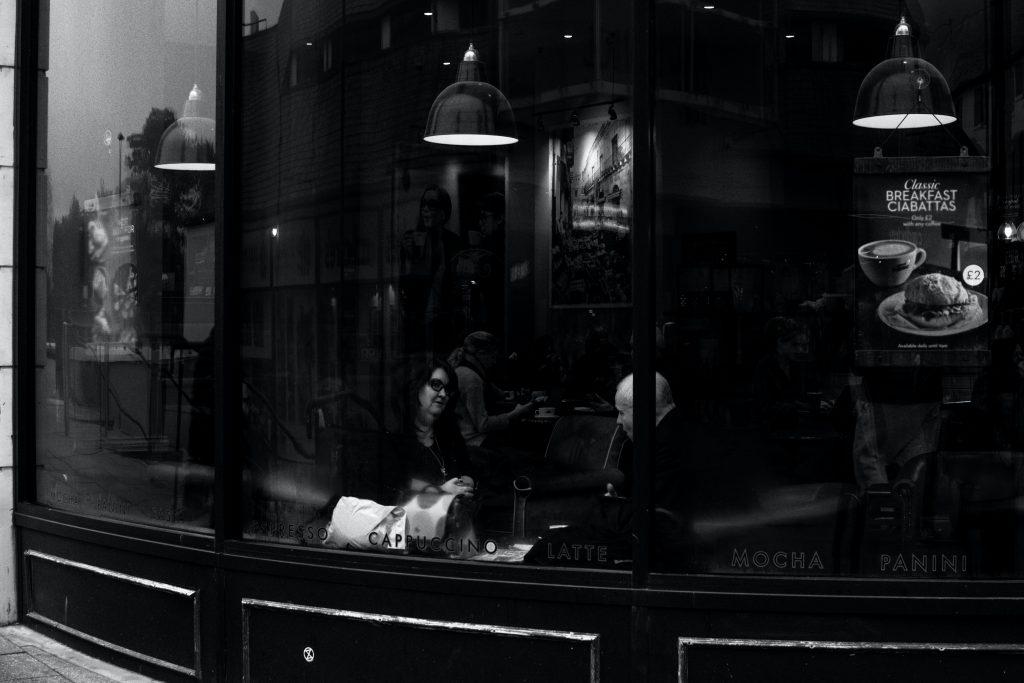Coffee is the second-best trade in the world. A major part of the modern diet is that without coffee, many people do not start the day, and many do not wake up at night. Coffee is in high demand in Finland. Thousands of coffee shops have been set up in Europe and America, where millions of people are drinking coffee every day. But did you know that an Ethiopian shepherd is credited with inventing coffee? today you will learn a brief history of coffee.
There is a huge history behind the popularity of coffee today. Catholic Christians at first vehemently opposed it, calling it the “Drink of the Devil.” Even feminists once called it ‘smelly dirty mud’. In today’s article, we will highlight some of the interesting facts behind the introduction of coffee.
was coffee the first to be discovered because of excited goats?

In the ninth century, a lone shepherd named Kaldi lived in Ethiopia. He seemed to have a little more mischief on his goat herd than on any other day. While searching, he noticed that his goats were eating fruit like red jam. The pious Kaldi immediately comes to the imam of the local mosque with the fruits. It is impossible to eat the fruits raw so imam threw the fruits into the fire. At first, these seeds seemed to the imam to be a temptation of satan. After a while, a great fragrance started coming, which is world-famous today. Imam’s students thought and saw what it was like to play cooking. Imam’s students thought let’s boil the seeds. This is how the world’s first cup of coffee is made.
Imam and his students noticed that after drinking this drink, they were able to stay awake for hours at night without much fatigue. The drink seemed to be effective for their prayers. The reputation of the hot drink gradually spread around.
Or was one of the first Sufis in Yemen to taste coffee?
Many say that coffee was invented by a Sufi saint in Yemen. His name is Ghotul Abdul Nuruddin Abul Al-Hasan Al-Sadili. He went on a trip to Ethiopia. Seeing a beautiful bird eating an unknown red fruit, he became curious and tasted it himself. Feels just as fresh as the previous story. There is another legend surrounding the discovery of coffee.
Many say that a Yemeni sheik named Omar was the first to discover the coffee plant. He had a reputation for healing the sick through prayer. He was deported from his native Moka to the desert of Osab. One day while wandering around hungry, he found a coffee plant. He used to burn the fruits by putting bitterness in his mouth. But then they become harder. After mixing them with water, a great fragrance spreads all around. This drink gave him great strength. That’s how he might have sipped the world’s first cup of coffee.
When the news of this discovery reached Moka, he was brought back to the country. After drinking this new drink, everyone feels fresh by suppressing fatigue and exhaustion. As a result, the coffee was named ‘Miracle Drug’. And Omar was given the title of ‘saint’.

Does coffee bring sin?
In 1475, the world’s first coffee house was opened in Constantinople, Turkey. Despite being invented by Muslims, coffee was widely viewed in many Muslim countries. In 1511, Makkah scholars banned the consumption of coffee. The then governor of Makkah, Khair Beg, thought that the people’s anger would be aroused by the coffee talk. As a result, his government will fall. Coffee is forcibly declared haram. But there was disagreement over whether coffee was really toxic. I have been in trouble for almost thirteen years.
Finally, in 1524, the Ottoman Sultan issued the first Selim Fatwa and resumed drinking coffee. Khair Beg was hanged for illegal activities. Coffee was banned in Cairo in 1532. Then all the coffeehouses there were demolished. By the sixteenth century, coffee had become very popular in countries like Syria, Turkey, Persia, Egypt. Foreigners called it ‘Arabian wine’. When millions of Muslims congregate each year in the holy city of Mecca for the Hajj, merchants bring coffee seeds from Ethiopia to trade with Muslims.
Coffee played a great role in keeping the devout worshipers awake at night. Its popularity quickly spread from the Middle East to the Balkans, Italy, and various parts of Europe. The Dutch introduced coffee to western America and Latin America. Coffee cultivation began in Latin America in 1820. Coffee quickly caught the attention of many countries in the East, beyond Indonesia.
A cup of coffee? Or the devil’s cup?
Coffee did not take long to reach Europe. Mediterranean sailors came to Venice, Italy to trade a variety of goods, and brought coffee with them. That was in 1815. At first, of course, it was viewed with some skepticism in Europe, as well as in the Middle East and Turkey. Coffee was associated with the invention of the Muslim name, on which it is the sacred drink red used in Christian religious ceremonies. The wine was taking its place. That’s why hardcore Catholics call it the ‘Bitter Discovery of Satan’. Its use, in any event, is restricted.
But its popularity could not be stopped. European tourists traveling the mysterious East continued to praise it without anyone noticing. When the two sides got into a dispute over this, then Pope Clement VIII came forward. He was fascinated by the taste of coffee. Declared that coffee is not only for Muslims but also for Christians! Rosik Pope said, Since then, coffee has been somewhat lauded as the ‘devil’s drink’ or ‘devil’s cup’.
Coffee came to the ‘Kingdom of Tea’ in the United Kingdom in the mid-seventeenth century
The diary of the famous British naval administrator Samuel Pepys tells of the first coffee house there. The first coffee house was opened in 1850 by a Jewish gentleman named Jacob. That building in Oxford’s The Angel in the Parish of St. Peter’s is now known as The Grand Cafe. The first coffee house in London was built in 1852 by a Greek named Pascoa Rosie.
Although tea was introduced in India by the British, coffee was introduced long before the advent of the East India Company. In 180, an Indian saint named Baba Budan brought the first coffee beans to South India. From there it spread all over India. However, the highest yields of coffee are still found in the southern Indian states in this region. Although attempts have been made to cultivate coffee in the hilly areas of Chittagong, Bangladesh has not yet produced coffee commercially
The coffee house was the social media of that time
There is a historical truth behind the song “Coffee House That Chat” by the very popular Manna because of the awakening of nostalgia. At that time coffee house was like a reunion fair. Everyone from students to teachers, Intellectuals, or scientists used to come to the coffee house. News of the country was between one country and another, or the threat of a plague could not be found anywhere else except in the coffee house.

By 185, over 3,000 coffee houses had been built in England alone. Some even had arrangements for overnight stays. Many started using business models like the coffee house in turkey. Their names were also very glamorous like Blackmore’s Head, Deacon’s Fame, Jerusalem Coffee House, Oriental Cigar Divine Morat the Great, Sultan’s Coffee House, etc.
Supplier of revolution
The influence of coffee was so great that it served as the driving force behind any revolution. The leaders of various European countries kept a close eye on these coffee houses just like the speed of food. Coffee was the main ingredient in various religious discourses in the Middle East and North Africa. In Turkish, coffee houses were called ‘Jahveh khaneh’. The Turkish name for coffee, ‘Qahveh’, comes from the Arabic ‘Qahha’, meaning ‘drink that satisfies hunger. Later it became a ‘cafe’ in Italian.
These coffee houses continue to be an integral part of everyday entertainment. At the same time, dancing, singing, playing chess, debates on politics or any other discussed topic, gossip were all going on there. At that time, the nickname of these coffee houses was “School of the Wise”, meaning “School of the Wise”.
Coffee was the “Viagra” of the seventeenth century
Despite their popularity, these coffeehouses were closed to women other than barbarians. In 1896, this suppressed anger of the girls came up in the writings of Marie Estelle. In her book, An Essay in Defense of the Female Sex, she writes that the residents of the coffee house stay at home, but their minds are on coffee. They are extremely indifferent to the world. With newspapers, votes, or gadgets the main relationship. They are getting relief from the daily monotony of coffee chat. Even if he can give his life for the country, he cannot take two steps for his family.
In Estelle’s writings, the minds of all the housewives of that time came up. The inner anger of these women, who are busy handling household chores with a cup of tea, starts to grow. Coffee in 1674. The women even filed a petition against him. Wives claim that their husbands are not fulfilling their responsibilities in the family. For what? Just for a cup of ‘dirty black bitter smelling mud’. Estelle did not stop there, saying, “These descendants of our great ancestors have proved themselves to be the descendants of apes by drinking coffee.
This strange fruit has also diminished their power. They can no longer satisfy us as they once did!” Estelle’s claim was later laid-off as groundless during a statement. It is said that wine or brown alcohol is the only alcohol that reduces the sexual ability of men. But coffee helps them to be more energetic as well as enjoy their sex life properly.
The popularity of coffee has doubled at the rate at which attempts have been made to curb its spread. No drink in the world can compete with coffee in the modern era.




I?¦m now not certain the place you are getting your info, however good topic. I needs to spend a while studying more or figuring out more. Thank you for great info I was in search of this information for my mission.